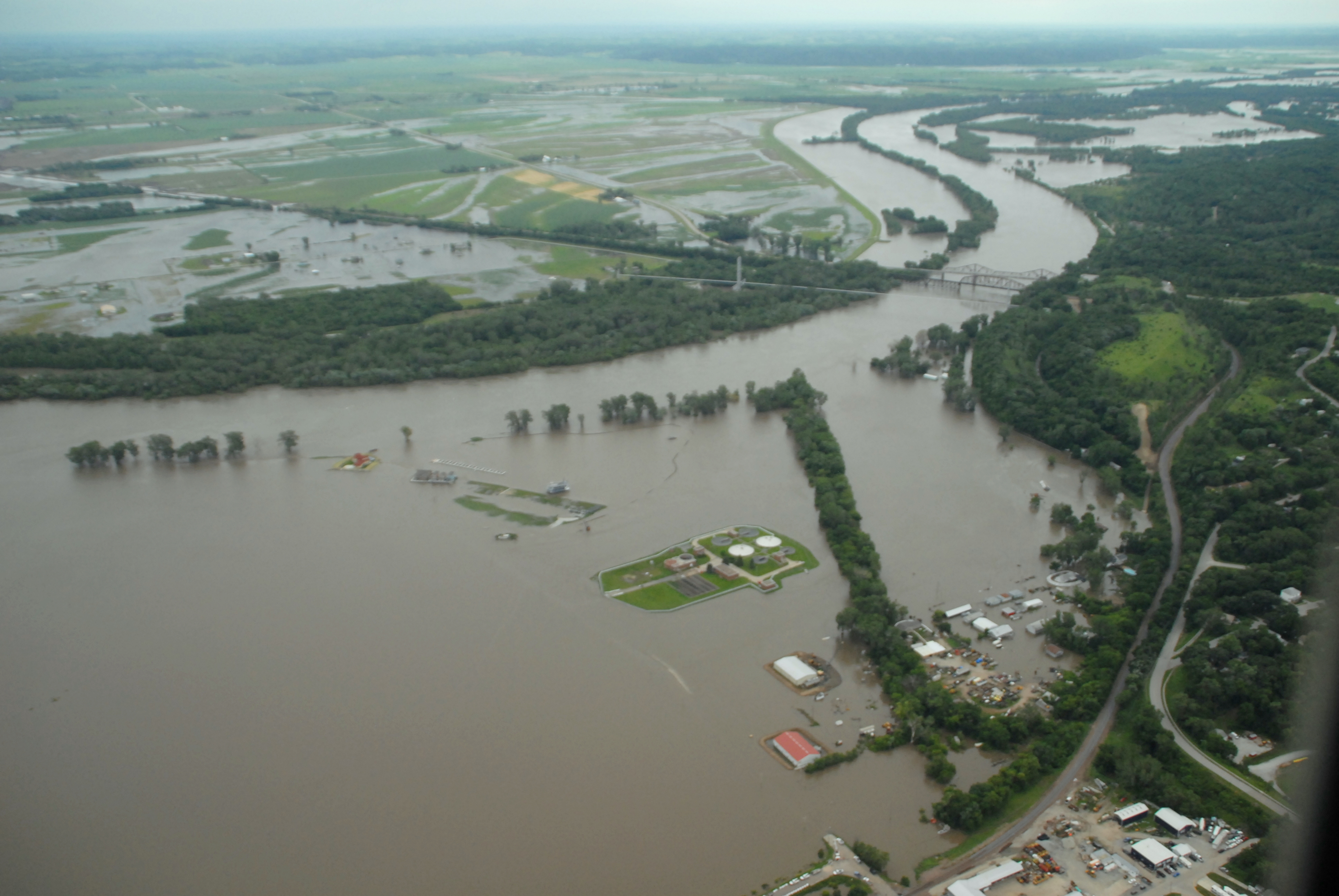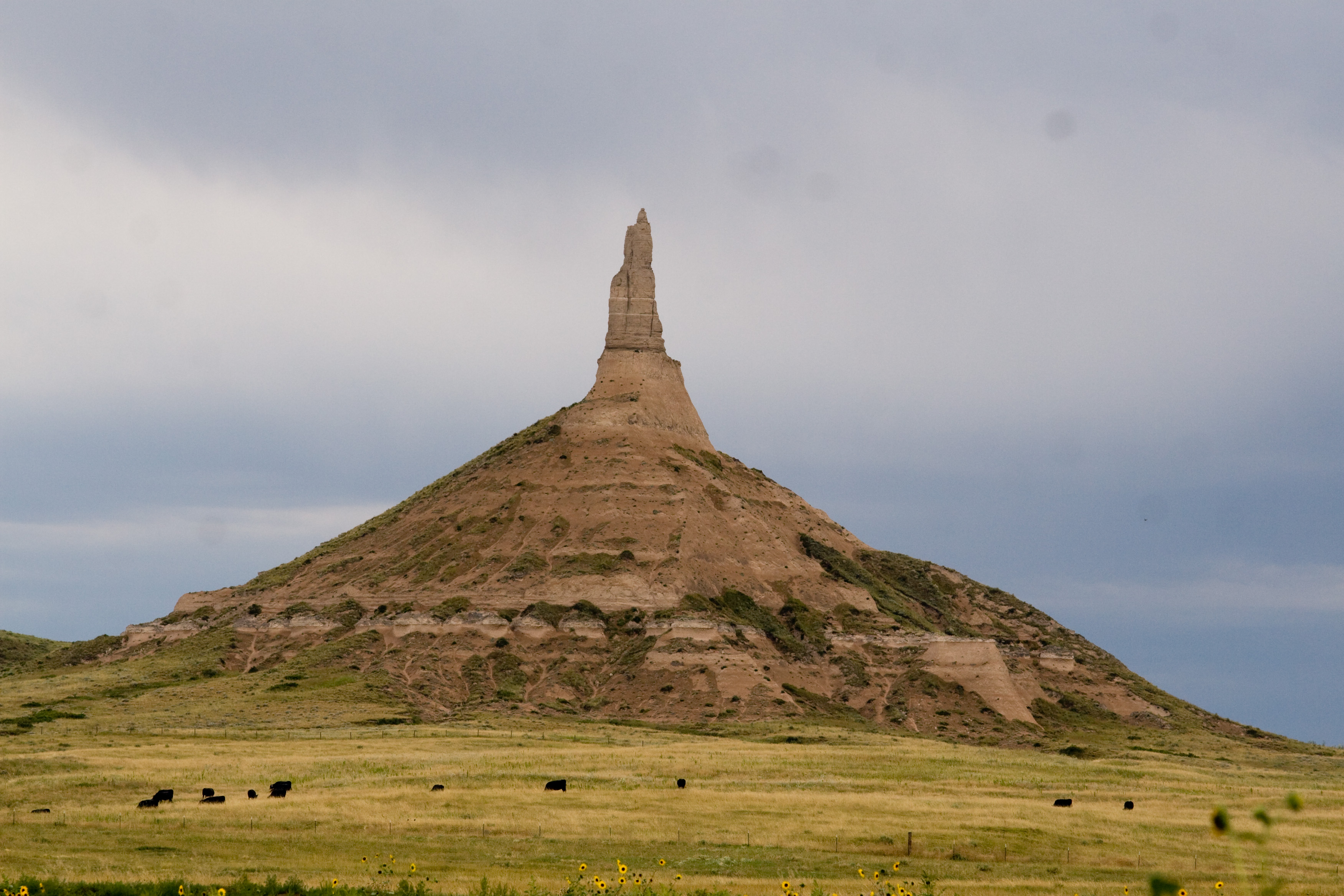|
Oto Reservation
The Otoe Reservation was a twenty-four square-mile section straddling the Kansas-Nebraska state line. The majority of the reservation sat in modern-day southeast Jefferson County, Nebraska. As early as 1834, the Oto relinquished land to the government in fulfillment of a treaty. It extended two miles (3 km) south of the state line its full length, into Washington and Marshall counties, Kansas. In Nebraska it extended into Jefferson County, which was earlier called Jones County, and Gage County. Altogether it comprised 250 sections totaling . The Glenwood, Paddock, Liberty Township and Barneston Townships are wholly within the historic boundaries of the reservation. It also included sections of the Elm, Sicily, Wymore, and Island Grove Townships. Although the Oto were originally located throughout southeastern Nebraska, their main town was once located along the Platte River near present-day Plattsmouth in the eastern part of the state. The Moses Merrill Mission was l ... [...More Info...] [...Related Items...] OR: [Wikipedia] [Google] [Baidu] |
Kansas
Kansas () is a state in the Midwestern United States. Its capital is Topeka, and its largest city is Wichita. Kansas is a landlocked state bordered by Nebraska to the north; Missouri to the east; Oklahoma to the south; and Colorado to the west. Kansas is named after the Kansas River, which in turn was named after the Kansa Native Americans who lived along its banks. The tribe's name (natively ') is often said to mean "people of the (south) wind" although this was probably not the term's original meaning. For thousands of years, what is now Kansas was home to numerous and diverse Native American tribes. Tribes in the eastern part of the state generally lived in villages along the river valleys. Tribes in the western part of the state were semi-nomadic and hunted large herds of bison. The first Euro-American settlement in Kansas occurred in 1827 at Fort Leavenworth. The pace of settlement accelerated in the 1850s, in the midst of political wars over the slavery debate. Wh ... [...More Info...] [...Related Items...] OR: [Wikipedia] [Google] [Baidu] |
Plattsmouth
Plattsmouth is a city and county seat of Cass County, Nebraska, United States. The population was 6,502 at the 2010 census. History The Lewis and Clark Expedition passed the mouth of the Platte River, just north of what is now Main Street Plattsmouth, on July 21, 1804. Plattsmouth first appeared in 1854 as "the Barracks", a trading post established by Sam Martin, owner of the Platteville ferry in neighboring Mills County, Iowa, ferryman Wheatley Mickelwait, and Glenwood, Iowa attorney and politician Colonel Joseph Longworthy Sharp. The community was renamed Plattsmouth for its location at the mouth of the Platte River, and was incorporated on March 15, 1855. The organization of the city under the charter of March 1855 was effected December 29, 1856, by the election of Wheatley Mickelwait to the Mayoralty, and Enos Williams, W. M. Slaughter and Jacob Vallery, Aldermen. This Council met and proceeded to business on January 29, 1857, their first ordinance, approved by the May ... [...More Info...] [...Related Items...] OR: [Wikipedia] [Google] [Baidu] |
Otoe
The Otoe (Chiwere: Jiwére) are a Native American people of the Midwestern United States. The Otoe language, Chiwere, is part of the Siouan family and closely related to that of the related Iowa, Missouria, and Ho-Chunk tribes. Historically, the Otoe tribe lived as a semi-nomadic people on the Central Plains along the bank of the Missouri River in Nebraska, Kansas, Iowa and Missouri. They lived in elm-bark lodges while they farmed, and used tipis while traveling, like many other Plains tribes. They often left their villages to hunt buffalo. In the early 19th century, many of their villages were destroyed due to warfare with other tribes. European-American encroachment and disease also played a role in their decline. Today, Otoe people belong to the federally recognized tribe, the Otoe-Missouria Tribe of Indians, headquartered in Red Rock, Oklahoma. History The Otoe were once part of the Ho-Chunk and Siouan-speaking tribes of the Western Great Lakes and Upper Midwest. Around ... [...More Info...] [...Related Items...] OR: [Wikipedia] [Google] [Baidu] |
Native American Tribes In Nebraska
Native American tribes in the U.S. state of Nebraska have been Plains Indians, descendants of succeeding cultures of indigenous peoples who have occupied the area for thousands of years. More than 15 historic tribes have been identified as having lived in, hunted in, or otherwise occupied territory within the current state boundaries. The 19th-century history of the state included the establishment of eight Indian reservations, including a half-breed tract. Today six tribes, (Omaha, Winnebago, Ponca, Iowa, Santee Sioux, Sac and Fox), have reservations in Nebraska. In 2006 American Indian and Alaska Native persons comprised one percent of the state's population. Towns at the northern border also have relations within reservations within South Dakota. Tribes Several language groups were represented by the American Indians in present-day Nebraska. The Algonquian-speaking Arapaho lived for more than 1,000 years throughout the western part of Nebraska. In a prehistoric period; Neb ... [...More Info...] [...Related Items...] OR: [Wikipedia] [Google] [Baidu] |
Barneston, Nebraska
Barneston is a village in Gage County, Nebraska, United States. The population was 90 at the 2020 census. History The present-day town of Barneston was settled at the site of one of the largest Oto villages in the 19th century. The agency and a trading post were located there. Barneston was founded by a French fur trapper who was married to an Oto woman. Barnestown was platted in 1884 when the Marysville and Blue Valley Railroad was extended to that point. The community was named after Francis M. Barnes, an early settler. Geography According to the United States Census Bureau, the village has a total area of , all land. Demographics 2010 census As of the census of 2010, there were 116 people, 48 households, and 28 families living in the village. The population density was . There were 55 housing units at an average density of . The racial makeup of the village was 93.1% White and 6.9% from two or more races. Hispanic or Latino of any race were 8.6% of the population. There ... [...More Info...] [...Related Items...] OR: [Wikipedia] [Google] [Baidu] |
Pawnee People
The Pawnee are a Central Plains Indian tribe that historically lived in Nebraska and northern Kansas but today are based in Oklahoma. Today they are the federally recognized Pawnee Nation of Oklahoma, who are headquartered in Pawnee, Oklahoma. Their Pawnee language belongs to the Caddoan language family, and their name for themselves is Chatiks si chatiks or "Men of Men". Historically, the Pawnee lived in villages of earth lodges near the Loup, Republican, and South Platte rivers. The Pawnee tribal economic activities throughout the year alternated between farming crops and hunting buffalo. In the early 18th century, the Pawnee numbered more than 60,000 people. They lived along the Loup (ickariʾ) and Platte (kíckatuus) river areas for centuries; however, several tribes from the Great Lakes began moving onto the Great Plains and encroaching on Pawnee territory, including the Dakota, Lakota (páhriksukat / paahíksukat) ("cut throat / cuts the throat"), and Cheyenn ... [...More Info...] [...Related Items...] OR: [Wikipedia] [Google] [Baidu] |
Ponca
The Ponca ( Páⁿka iyé: Páⁿka or Ppáⁿkka pronounced ) are a Midwestern Native American tribe of the Dhegihan branch of the Siouan language group. There are two federally recognized Ponca tribes: the Ponca Tribe of Nebraska and the Ponca Tribe of Indians of Oklahoma. Their oral history states they originated as a tribe east of the Mississippi River in the Ohio River valley area and migrated west for game and as a result of Iroquois wars. The term ''Ponca'' was the name of a clan among the Kansa, Osage, and Quapaws. The meaning of the name is "Those Who Lead." Early history At first European contact, the Ponca lived around the mouth of the Niobrara River in northern Nebraska.Karr, StevenA Brief History of the Ponca Tribe.''The Official Website of the Ponca Tribe of Oklahoma.''. Retrieved 8 August 2009. According to tradition, they moved there from an area east of the Mississippi just before Columbus' arrival in the Americas. Siouan-speaking tribes such as the Omaha, O ... [...More Info...] [...Related Items...] OR: [Wikipedia] [Google] [Baidu] |
Nebraska State Historical Society
History Nebraska, formerly the Nebraska State Historical Society is a Nebraska state agency, founded in 1878 to "encourage historical research and inquiry, spread historical information ... and to embrace alike aboriginal and modern history." It was designated a state institution in 1883, and upgraded to a state agency in 1994. The agency rebranded and announced their name change to History Nebraska on April 30, 2018. The agency's mission statement is " ocollect, preserve, and open to all, the histories we share." The agency developed a process for the return of human remains, burial objects and cultural items of 1,400 individuals in accordance with the Native American Graves Protection and Repatriation Act of 1990. State Historic Sites Facilities and operations of the society include: History Nebraska also operates the Gerald R. Ford Conservation Center in Omaha. See also * National Register of Historic Places listings in Nebraska * List of National Historic Landmark ... [...More Info...] [...Related Items...] OR: [Wikipedia] [Google] [Baidu] |
Diller, Nebraska
Diller is a village in Jefferson County, Nebraska, United States. The population was 248 at the 2020 census. History Diller was platted in 1880 when the railroad was extended to that point. It was named for Samuel Diller, a pioneer settler. Geography Diller is located at (40.108717, -96.937840). According to the United States Census Bureau, the village has a total area of , all land. Demographics 2010 census As of the census of 2010, there were 260 people, 114 households, and 69 families living in the village. The population density was . There were 129 housing units at an average density of . The racial makeup of the village was 95.0% White, 0.4% Native American, 0.4% Pacific Islander, 3.1% from other races, and 1.2% from two or more races. Hispanic or Latino of any race were 7.3% of the population. There were 114 households, of which 30.7% had children under the age of 18 living with them, 49.1% were married couples living together, 5.3% had a female householder with no ... [...More Info...] [...Related Items...] OR: [Wikipedia] [Google] [Baidu] |
Red Rock, Oklahoma
Red Rock ( iow, Chína Ino Šúje pronounced , meaning "Rock Red town") is a town in northern Noble County, Oklahoma, United States. The population was 283 at the 2010 census, a decline from 293 at the 2000 census. The headquarters of the Otoe-Missouria Tribe of Indians is located in Red Rock.Betty L. Waters, "Red Rock," ''Encyclopedia of Oklahoma History and Culture''. Accessed March 29, 2015. History In 1886, the Atchison, Topeka and Santa Fe Railroad built a line through what would become Noble County. The land around the railroad crossing of |
Oklahoma
Oklahoma (; Choctaw language, Choctaw: ; chr, ᎣᎧᎳᎰᎹ, ''Okalahoma'' ) is a U.S. state, state in the South Central United States, South Central region of the United States, bordered by Texas on the south and west, Kansas on the north, Missouri on the northeast, Arkansas on the east, New Mexico on the west, and Colorado on the northwest. Partially in the western extreme of the Upland South, it is the List of U.S. states and territories by area, 20th-most extensive and the List of U.S. states and territories by population, 28th-most populous of the 50 United States. Its residents are known as Oklahomans and its capital and largest city is Oklahoma City. The state's name is derived from the Choctaw language, Choctaw words , 'people' and , which translates as 'red'. Oklahoma is also known informally by its List of U.S. state and territory nicknames, nickname, "Sooners, The Sooner State", in reference to the settlers who staked their claims on land before the official op ... [...More Info...] [...Related Items...] OR: [Wikipedia] [Google] [Baidu] |




